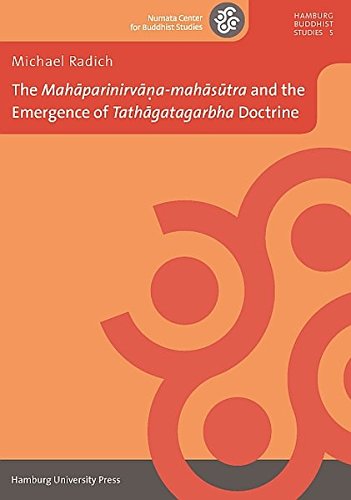The Mahāparinirvāṇa-mahāsūtra and the Emergence of Tathāgatagarbha Doctrine
< Books
| Line 44: | Line 44: | ||
*** {{i|4.5 "Material-miraculous" positive corollaries of docetism about the<br>Buddha’s conception, gestation and birth|118}} | *** {{i|4.5 "Material-miraculous" positive corollaries of docetism about the<br>Buddha’s conception, gestation and birth|118}} | ||
*** {{i|4.6 The material-miraculous, "docetic" womb|124}} | *** {{i|4.6 The material-miraculous, "docetic" womb|124}} | ||
| − | *** {{i|4.7 Dharmakāya and vajrakāya as positive corollaries of corporeal docetism|129}} | + | *** {{i|4.7 Dharmakāya and vajrakāya as positive corollaries of corporeal<br>docetism|129}} |
| − | *** {{i|4.8 Tathāgatagarbha as a "soteriological-transcendent" positive corollary to docetism about the Buddha’s conception, gestation and birth|132}} | + | *** {{i|4.8 Tathāgatagarbha as a "soteriological-transcendent" positive corollary<br>to docetism about the Buddha’s conception, gestation and birth|132}} |
*** {{i|4.9 Docetism and the problem of the Buddha’s mother(s)|143}} | *** {{i|4.9 Docetism and the problem of the Buddha’s mother(s)|143}} | ||
*** {{i|4.10 Docetic reinterpretations of other branches of kinship|154}} | *** {{i|4.10 Docetic reinterpretations of other branches of kinship|154}} | ||
Revision as of 13:36, 5 August 2020
Famously, tathāgatagarbha doctrine holds that every sentient being has within the body a womb for Buddhas, or an embryonic Buddha – the potential for full buddhahood. Previous scholars have seen this doctrine as originating in the Tathāgatagarbha-sūtra. In this book, Michael Radich argues that rather, the Mahāparinirvāṇa-mahāsūtra is most likely our earliest extant tathāgatagarbha text. Radich then argues that tathāgatagarbha ideas originated as part of a wider pattern of docetic Buddhology – ideas holding that Buddhas are not really as they appear. Buddhist docetic texts are clearly troubled by the notion that Buddhas could have flesh-and-blood human mothers. The Mahāparinirvāṇa-mahāsūtra is one such text, and tathāgatagarbha functions as a better substitute for imperfect human maternity: rather than a putrid, painful human womb, buddhahood springs from a “womb” inherent in every sentient being, which promises final liberation from flesh altogether. This book should interest readers concerned with the history of Buddhist ideas, gender in Buddhism, the early Mahāyāna, the cult of the Buddha’s relics, and relations between Buddhist ideas and practice. (Source: Hamburg University Press)
| Citation | Radich, Michael. The Mahāparinirvāṇa-mahāsūtra and the Emergence of Tathāgatagarbha Doctrine. Hamburg Buddhist Studies 5. Hamburg: Hamburg University Press, 2015. https://d-nb.info/1069352969/34. |
|---|---|

